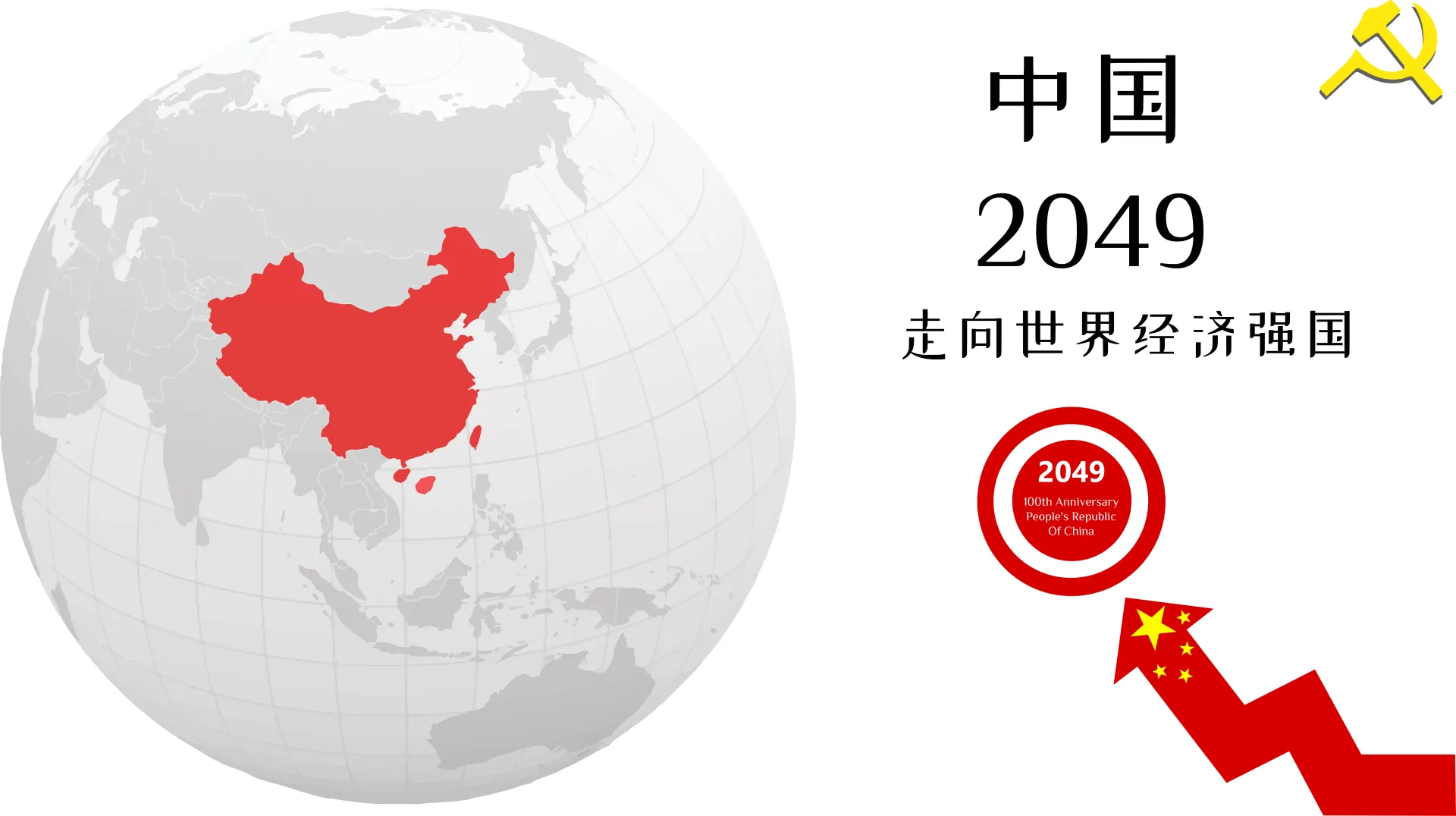Global China 2049 Initiative: Challenges & Opportunities For The US
Global China 2049 Initiative − a discourse in some Western expert circles and not an official Chinese term − refers to the Chinese economic strategies and policies across various sectors as it moves toward achieving its aspirational “national rejuvenation dream.” By 2049, which marks the 100th anniversary of its founding, the People’s Republic of China is set to become “a great modern socialist country that is prosperous, strong, democratic, culturally advanced, harmonious, and beautiful.”
Chinese senior-officials’ policy statements and publicized industrial plans (like the Strategic Emerging Industries initiative, the National Strategy of Innovation-Driven Development, the Made in China 2025, the Internet Plus plans, the New Generation of Artificial Intelligence Development Plan, and the 14th Five-Year Plan for 2021 to 2025, etc.) provide some insights into China’s development objectives and industrial priorities for the years ahead through 2049.
The primary imperative for Chinese authorities to move toward its 2049 “grand goal” is to ensure sustainable and balanced economic growth against the background of multiple domestic issues. The challenges have been identified as aging population, widening income inequality, economic imbalances, production overcapacity, rising local government and corporate debt, an inefficient financial system, and environmental degradation. The country also has to deal with structural problems, including the middle-income trap and international challenges resulting from rising strategic competition with the US and the Covid-19 pandemic.
Given that the growth model that served China well in recent decades are no longer sustainable and efficient, the authorities are currently restructuring its economic model, adapting it to new challenges and tasks. Since the 2008 global financial crisis, and especially after Xi Jinping came to power in 2013, China has been gradually changing its economic growth pattern based on fixed investment and exports, emphasizing domestic consumption and innovation as the new drivers of its economy.
To this end, the most recent initiative has been the “dual circulation” strategy. It was unveiled in May 2020 and incorporated in the 14th Five-Year Plan for 2021 to 2025. The “dual circulation” strategy, which is key to guiding Chinese economic policies in the foreseeable future, accentuates the role of domestic production and consumption (or internal circulation). At the same time, in parallel, they continue to rely on the global market (external circulation). According to Chinese official estimates, the strategy aims to boost domestic supply, taking advantage of the Chinese extra-large market scale (China is the largest market in the world for most products with a middle-income group of 400 million people, according to Chinese official estimates. This unleashes the potential of domestic demand as a driver of economic growth and reduces the Chinese economy’s reliance on overseas markets and technology against an increasingly challenging and complex global environment. Beijing seeks to reorient its manufacturing sector from producing for export to meeting domestic demand.
An emphasis on internal circulation is closely connected with another key Chinese national priority − promoting innovation and self-sufficiency in key strategic industries. Domestic innovation capabilities have been a top priority for the Chinese government for at least 15 years since China adopted the 2006-2020 National Medium and Long-Term Program for Science and Technology Development. This plan called for enhancing “indigenous” innovation capability, accelerating science and technology development, and narrowing down the technological gaps with the developed nations. It set objectives for China to become an “innovation-oriented” country and a world science and technology power by the middle of the 21st century.
At the 18th Chinese Communist Party National Congress, held in 2012, “innovation-driven development” was mentioned as a new key strategy that lies “at the heart of country’s development.” Since then, Beijing has viewed innovative development as an imperative and the way to achieve “the rejuvenation of the Chinese nation.” The push for domestic innovation was further reinforced in 2015 by introducing the Made in China 2025 Industrial Plan, which seeks to reduce China’s dependence on foreign technology, catch up to technologically advanced countries and create competitive advantages for China. These advantages are manifest in the following 10 key sectors:
- New-generation information technology
- High-end computerized machines and robots
- Aerospace technology
- Maritime equipment and high-tech ships
- Advanced railway transportation equipment
- New energy and energy-saving vehicles
- Energy equipment
- Agricultural machines
- New materials
- Biopharma and high-performance medical devices.
It aims to advance China into higher positions in the global manufacturing value chain (from the lower-to-medium end of the value chain to the medium-to-higher end) and expand its global market competitiveness and global market share. It is correlated with China’s focus on creating national champions with independent innovation capabilities which could compete with leading multinational companies. By 2049, China aims to lead global manufacturing and innovation with a competitive position in advanced technology and industrial systems. It plans to become “an innovative country in all respects.”








